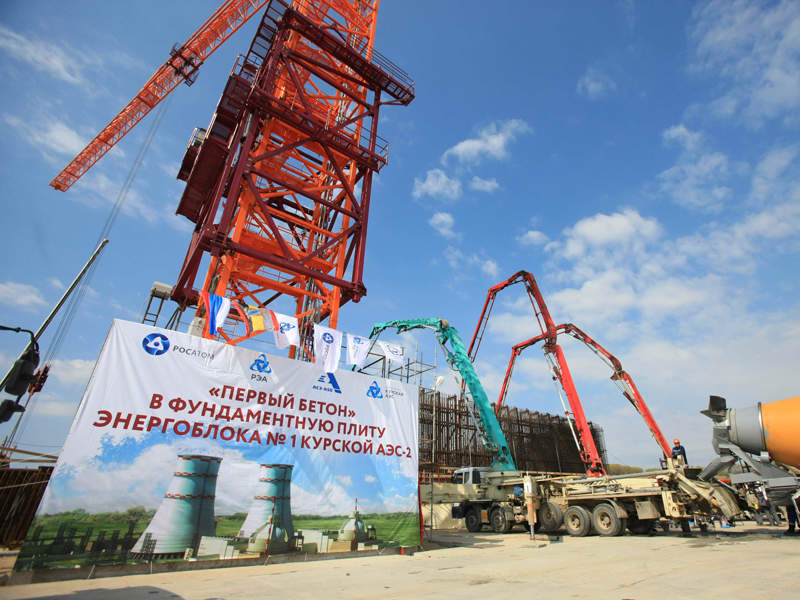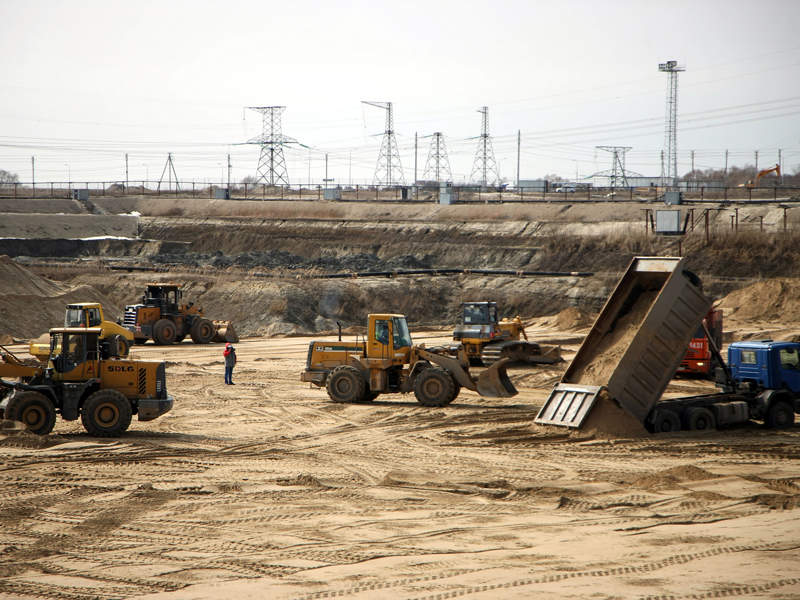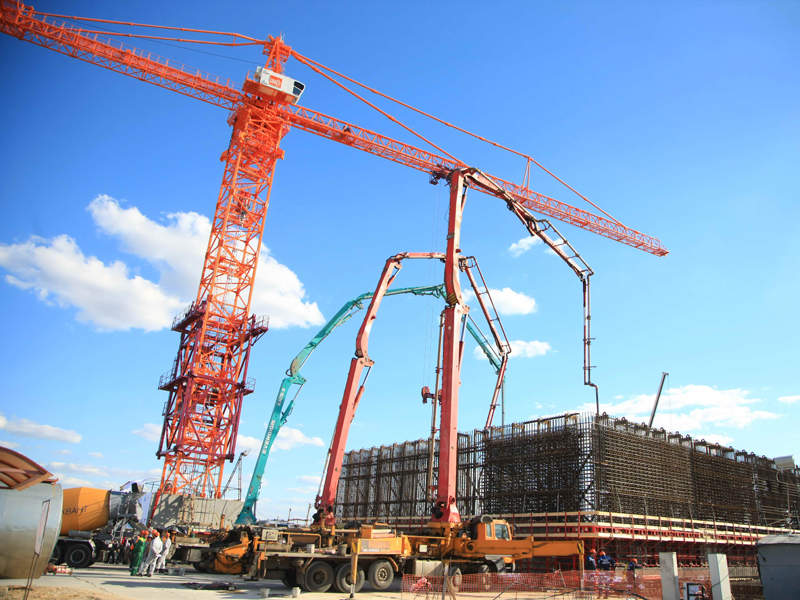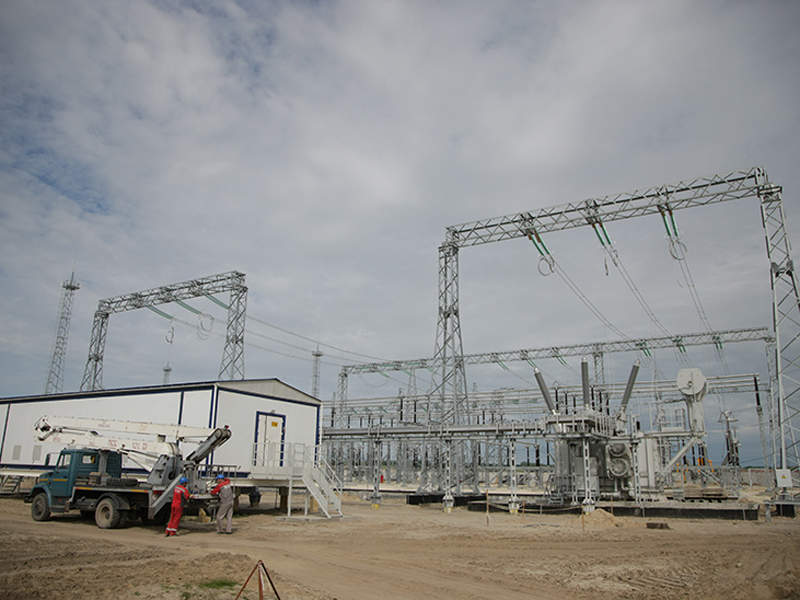The Kursk II nuclear power plant (NPP) in western Russia is being developed by Rosenergoatom, a subsidiary of Rosatom, at an estimated cost of Rbs225bn ($3.5bn approximately). The 2.5GW power plant will replace the existing Kursk NPP.
The two power units of the new NPP are planned to be commissioned at the same time as the decommissioning of the first two power units of the Kursk NPP, which is the biggest source of electricity in the Central Russian Chernozem.
The Kursk NPP is being operated with four 1GW Reaktor Bolshoy Moshchnosti Kanalnyy (RBMK) reactors.
In 2015, Rosenergoatom proposed to decommission nine nuclear units in Russia by 2023, including one RBMK at Kursk NPP. The second RBMK unit is due to retire by 2027 while the third and fourth units are scheduled to close in 2029 and 2031, respectively.
Rostechnadzor, the supervisory body of the Government of Russia on ecological, technological and nuclear issues, granted the construction licence for the first unit in June 2016 and for the second unit in October 2016.
The first concrete for the NPP was poured in April 2018, marking the start of construction of the nuclear island building foundations. The roof of the turbine building of the second unit was completed in January 2023 and the standby diesel generators of the first unit were installed in February 2023.
Kursk II nuclear power plant make-up
The Kursk II nuclear power plant will feature two 1.2GW VVER-TOI (Water-Water Energy Reactor Universal Optimised Digital-Typical Optimised, with enhanced Information) design nuclear reactors.
The new VVER-TOI project is also designated as V-510. The two 3+ generation reactors of Kursk NPP II will be the pilot units of the VVER-TOI project and include a turbine plant featuring a low-speed turbine generator. The new design will increase the reactor capacity by an additional 25% when compared to the conventional VVER-1000 reactors.
A PS330/10kV substation will provide electric energy for the construction works and the site’s facilities. The new substation will be connected from a 330kV operating outdoor switchgear (OSG) to a 330kV overhead power line (OPL).
VVER-TOI reactor design
The new VVER-TOI design doubles the service life of reactor equipment from 30 to 60 years, with a possibility of extending it to 80 years.
Offering low construction and operating costs, the new reactor design features an upgraded pressure vessel, an improved core design to increase cooling reliability, and an advanced passive safety system.
The reactor vessel’s core will have a bigger shell compared to the conventional VVER. Advanced welding materials will be used while designing the reactor, which will also help in optimising the design of the steam generators.
The new power units comply with the modern requirements of the International Atomic Energy Agency (IAEA) in the field of safety. The units will feature up-to-date safety systems such as a reactor core melt trap, and heat removal passive system, which allows the reactor core to cool down in the absence of the power supply by using natural air circulation.
The units are also equipped with an automated stress-strain state monitoring system, metal “pancake” sensors with a complex filling, and a passive protective technology system called the molten core catcher, which is intended to gather radioactive materials in the event of an emergency reactor destruction.
Furthermore, dry reactor shielding is provided to reduce exposure to radioactive and heat radiation and to guarantee consistent operation of the ionisation chambers.
Kursk II construction
An estimated 1.2 million cubic metres of soil was excavated in 2017 as part of the construction work on the two new units. More than 800,000m³ of sand and gravel mixture was laid at the base of the NPP II buildings and structures.
Formation of the sand and gravel coating of unit one was completed in October 2017 while the first concrete layer (concrete bedding) under the foundation plate was assembled in November 2017.
The first 16t reinforced concrete block was installed on the rebar of the lower foundation belt in December 2017. The foundation comprises 105 reinforced concrete blocks with a total weight of 1,600t.
The NPP construction works also included engineering networks such as steam pipelines, hot water supply pipelines for the construction base, and heating networks.
Five 40t GIRAFFE TDK-40.1100 pillar cranes are being used for constructing the internal and boundary walls of the reactor unit of the first power unit of Kursk II. DEMAG CC 6800, a heavy-duty crane, is also being used for constructing the building structures at the reactor buildings.
Major construction works completed in 2022 for the first power unit included the installation of the reactor vessel, welding of the main circulation pipeline, installation of the first steam turbine generator and the domed part of the outer containment shell. In addition, the 179m evaporative cooling tower of the first unit was installed.
The second power unit’s inner containment dome, accumulator tanks of the second stage of the passive reactor protection system and the first stage of the emergency core cooling system were also installed during the year.
Contractors involved in Kursk II
The new VVER-TOI reactor was designed by the ASE Group of Companies and the engineering division of ROSATOM as an improvement of the existing VVER-1200 reactor design.
ASE Group of Companies is also the general contractor and designer of the project while Trest Rosspetsenergomontazh was awarded the subcontract for the plant construction.
Rosatom subsidiary AEM Technology was awarded the contract for manufacturing the bottom of the reactor vessel for unit one of Kursk II. Atomenergomash, a power engineering company, is supplying nuclear steam-generating plant equipment.
Energotex, a manufacturer of nuclear power plant equipment, manufactured the melt traps or melt localisation devices (MLD) for the project, while Nyazepetrovsk Casting and Mechanical Plant manufactured GIRAFFE TDK-40.1100 pillar cranes for use in the NPP construction.
The 3+ generators of the power plant were manufactured by Power Machines, an energy systems manufacturer while AEM Technology unit Petrozavodskmash developed assembling bodies of reactor coolant pumps.
Trest RosSEM, NIKIMT-Atomstroy, and Energospetsmontazh are some of the contractors involved in the construction of the power plant.
Suppliers involved in the project include Teko Filter, a water treatment equipment supplier, and SVEL Group, an electrical equipment manufacturer.







